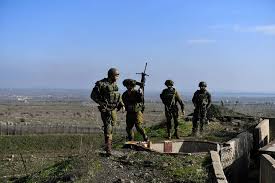The Israeli intervention deepens the crisis in the Sweida governorate; what are the possible scenarios?

As for the regional and international reactions, the United States shows a clear contradiction; it supports a ceasefire through the Amman meeting but ignores the Israeli intervention. In addition, it pressures Damascus to accept a "humanitarian corridor" between Sweida and Israel. The Syrian position is between a security solution and negotiations; the Syrian government wants to redeploy the army in Sweida and stop the smuggling of weapons across the Jordanian border, but it faces rejection from the notables of Sweida and complications in negotiations with SDF.
The Jordanian role is a cautious mediator; Amman supports the stability of Syria to stop the flow of drugs and weapons into its territory, but it avoids confrontation with Israel.
If Israel continues to support sectarian divisions, wider confrontations may erupt. In addition to hindering reconstruction, investors hesitate in light of the security instability. The Damascus government must convince the notables of Sweida to integrate without concessions that affect sovereignty.
Among the possible future scenarios is a limited military escalation; if Israel maintains its position, Damascus may launch selective military operations. There may be a potential Russian intervention to stabilize the situation (especially after reinforcing its presence in Qamishli).
American pressures to force Israel to ease its intervention. And secret negotiations between Damascus and moderate notables from Sweida. The scenario of a comprehensive explosion is considered the worst because the failure of political solutions leads to a mini civil war in Sweida.
The Israeli intervention in Sweida is part of a strategy to keep the southern front open. The biggest challenge for the Syrian government is to gain the trust of Sweida without conceding sovereignty, while the international community must pressure Israel to back down from its position.